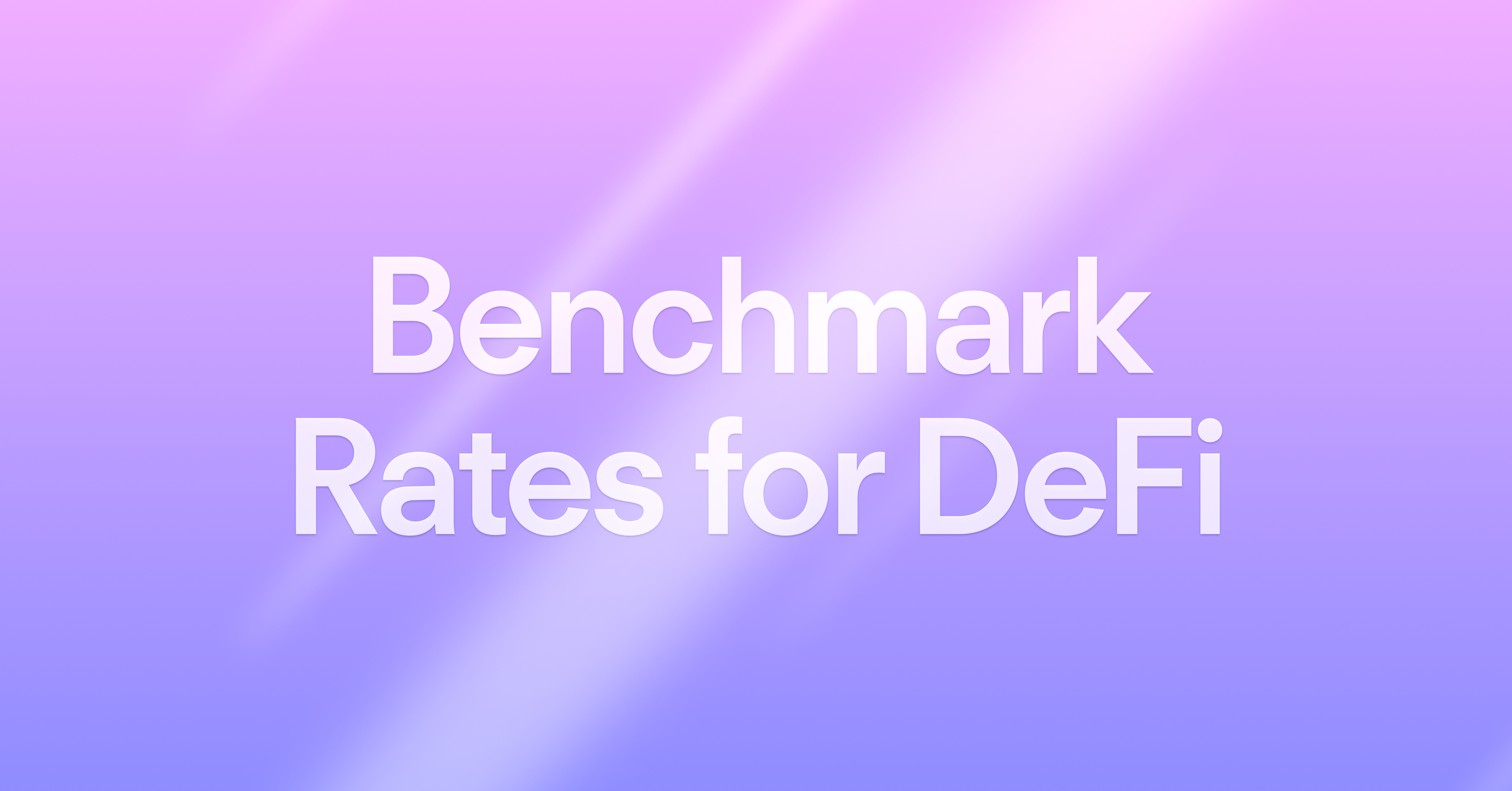
The financial system relies on benchmark rates like SOFR and the federal funds rate to price everything from mortgages to corporate bonds. They are the gravitational center of global capital markets.
When a bank prices a 30-year mortgage, it starts with the benchmark rate and adds premiums for credit risk, duration risk, and profit margin. When corporations issue bonds, investors demand yields that reflect the base rate plus compensation for the company's specific risk. Without reliable benchmark rates, the entire pricing system breaks down.
These benchmark rates work because they measure real transactions in the deepest, most liquid markets where substantial money changes hands. They provide the essential reference point that allows complex financial products to exist.
DeFi is fast approaching the point where it requires a similar foundation. With hundreds of billions in all-time lending activity, DeFi needs a reliable way to understand the true cost of capital and earning rates. The same principles that make traditional benchmarks work apply here: scale, liquidity depth, and authentic rate discovery.
Scale Creates Reliability
Benchmark rates need to meet massive scale, trust, and safety requirements to be meaningful. They must capture enough activity to reflect genuine market conditions rather than the conditions of small, isolated, or fragmented pools.
Aave is the only DeFi protocol that operates at such a scale. The protocol holds c. $58 billion in net deposits and is facilitating over $23 billion in active borrows. More importantly, Aave captures 51-65% of all DeFi lending/borrowing activity. This concentration matters because it means Aave's rates reflect the behavior of most of the DeFi lending/borrowing sector.
Because Aave captures the majority of lending activity, large inflows or outflows of capital in DeFi are absorbed primarily by Aave’s markets. As a result, its rates offer the most accurate and reliable reflection of overall DeFi credit conditions.
Scale also creates stability. Large markets can absorb significant transactions without causing dramatic rate swings. For example, data shows that a $100 million deposit changes Aave's rates by only 20 basis points, while with other protocols, the same change can move rates as much as 200 basis points. That level of stability is essential for any rate that serves as a benchmark for other financial products.
Aave Rates in Action
Aave has become the go-to source of benchmark rates in DeFi organically, as teams have chosen to use it for this purpose:
-
CoinDesk Overnight Rates (CDOR) launched in 2025 as institutional-grade benchmark rates for DeFi, drawing directly from Aave's USDC and USDT lending pools. CDOR treats Aave's rates as the authoritative source of DeFi credit conditions, similar to how SOFR serves traditional finance.
-
Cap, a stablecoin powered by credible financial guarantees, uses Aave rates as the base market rate component of their dynamic hurdle rate calculation. Cap also automatically routes idle assets to Aave for yield, treating it as the benchmark for their entire system.
-
Level USD calls Aave their "core liquidity layer" and "DeFi's reference point for trust, liquidity, and yield." Level relies on Aave's rates for capital allocation decisions and rate-setting mechanisms.
-
Plasma put their predeposits into Aave to earn DeFi's most reliable rates. They demonstrated how emerging protocols view Aave as the essential infrastructure layer that can handle institutional-scale deposits while providing reliable yields.
There are many more examples not listed here.
When protocols need reliable, institutional-scale rates for core operations, they turn to Aave. It’s not ideal when a protocol’s earning-potential is limited by the scale of the protocol it builds on. Aave is in a unique position to be the only protocol with the liquidity depth to serve as a true benchmark.
Why This Matters
Reliable benchmark rates unlock sophisticated financial infrastructure that DeFi currently lacks such as such as floating-rate lending, dynamic risk pricing, institutional-grade derivatives, structured products, and standardized yield curves. Additionally, traditional finance relies on interest rate derivatives for risk management, with markets measured in hundreds of trillions of dollars. DeFi cannot develop similar infrastructure without a trusted benchmark rate.
Moreover, large investors require standardized rates for benchmarking, risk management, and derivatives pricing. Institutional market makers are already preparing to launch rate-based derivatives using Aave as the underlying benchmark.
Most importantly, reliable benchmark rates enable DeFi to compete on equal footing with traditional financial markets. They provide the standardized infrastructure essential for institutional participation, and the foundation for advanced financial products that support mainstream adoption.
As DeFi and TradFi converge, Aave becomes increasingly central to everything built on top of it. Its deep liquidity and rate stability are transforming Aave into DeFi’s benchmark reference, anchoring pricing, quantifying risk, and unlocking innovation across finance. With institutions beginning to build on and benchmark against Aave, it’s laying the foundation for tomorrow’s onchain financial system.